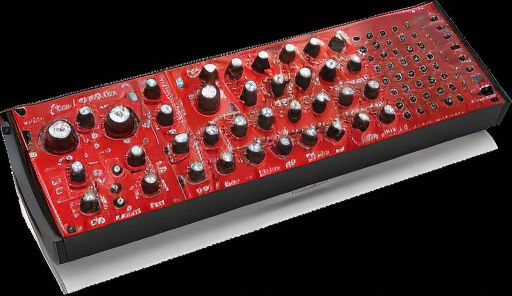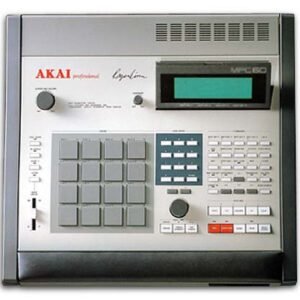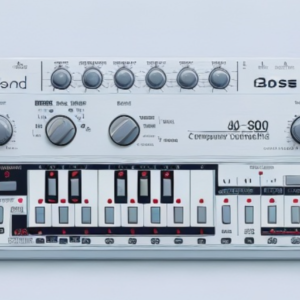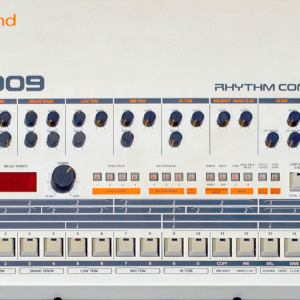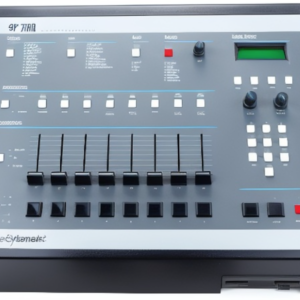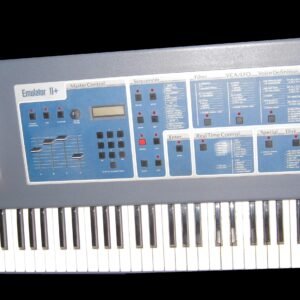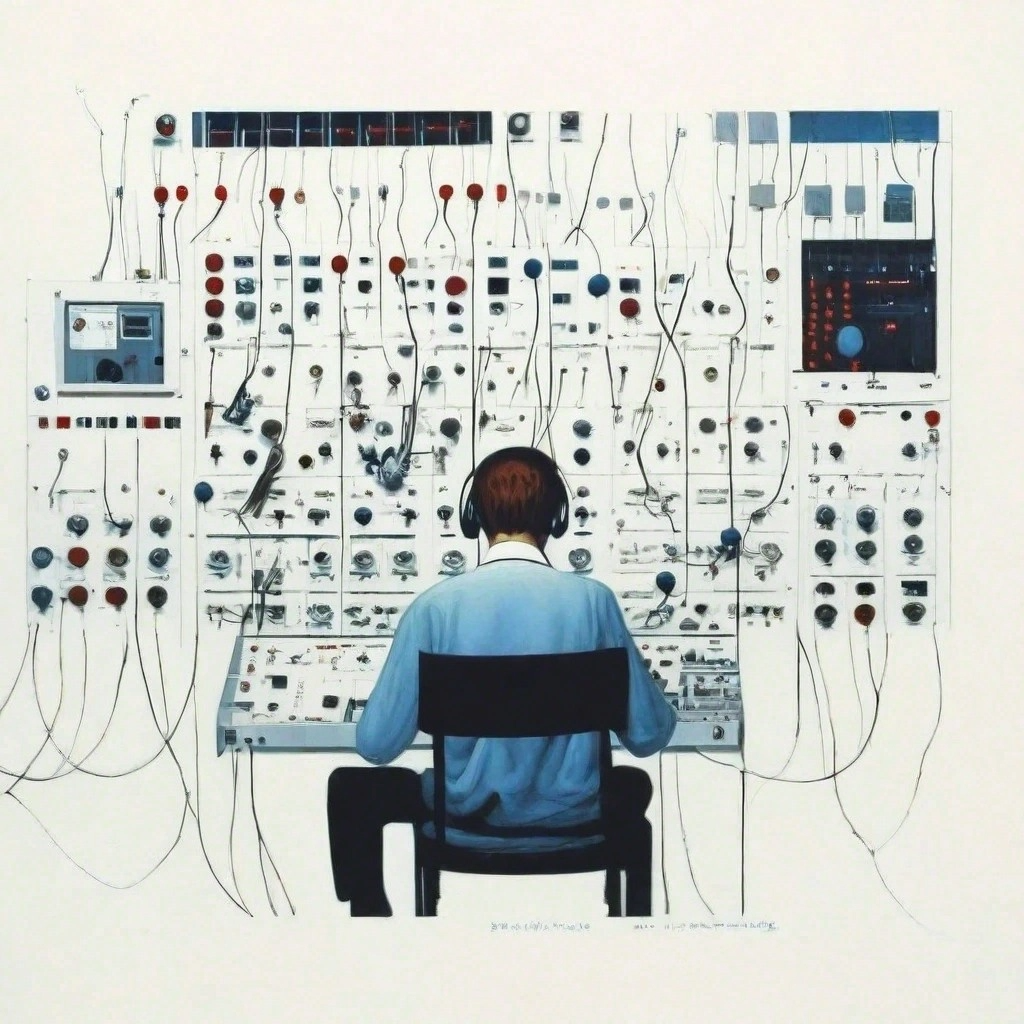Introductions
The Behringer Neutron is a powerful semi-modular analog synthesizer that has garnered attention in the synth community for its impressive capabilities at an affordable price point. With a design that harkens back to classic synthesizers while incorporating modern features, the Neutron offers a versatile sound palette and flexible patching options, making it suitable for both beginners and experienced synthesists alike.
At first glance, the Neutron’s sleek and compact design stands out, with a rugged metal chassis giving it a professional look and feel. Its layout is intuitive, with clearly labeled controls and a well-thought-out interface that encourages exploration and experimentation. Whether you’re diving into synthesis for the first time or looking to expand your sonic horizons, the Neutron offers a welcoming entry point into the world of analog sound design.
In this review, we’ll delve deeper into the design, features, and performance of the Behringer Neutron, exploring its sonic capabilities, user interface, connectivity options, and more. Whether you’re a seasoned synthesizer enthusiast or a curious newcomer, join us as we uncover what makes the Neutron a standout option in the world of analog synthesis.
Design and Build Quality
The design and build quality of the Behringer Neutron reflect a careful balance between functionality, aesthetics, and durability. With its robust construction and thoughtful design elements, the Neutron exudes a sense of reliability and professionalism.
One of the first things you’ll notice about the Neutron is its compact yet sturdy metal chassis. This rugged construction not only adds to the synth’s visual appeal but also ensures that it can withstand the rigors of both studio use and live performance. The Neutron feels substantial and well-built, giving users confidence in its longevity.
The layout of the Neutron is another aspect that contributes to its overall design quality. The front panel features a well-organized array of knobs, switches, and buttons, all of which are clearly labeled and ergonomically positioned for easy access. This thoughtful arrangement makes it easy to navigate the synth’s controls and encourages hands-on experimentation.
Additionally, the Neutron’s design incorporates vintage-inspired elements that pay homage to classic analog synthesizers while also incorporating modern touches. From the retro-style knobs and sliders to the sleek black and silver color scheme, the Neutron strikes a perfect balance between nostalgia and innovation.
Overall, the design and build quality of the Behringer Neutron are impressive, offering a blend of durability, functionality, and visual appeal. Whether you’re using it in the studio or taking it on stage, the Neutron stands out as a well-crafted instrument that’s built to last.
Technical Specifications:
– Oscillators: The Behringer Neutron features two VCOs (Voltage-Controlled Oscillators) with a wide frequency range, offering both sawtooth and pulse waveforms. Each oscillator can be independently tuned and manipulated to create a diverse range of sounds.
– Filter Section: The Neutron includes a classic 12 dB/Octave multimode filter, which can operate in low-pass, high-pass, and band-pass modes. This versatile filter adds character and warmth to the sound, while the dedicated cutoff and resonance controls allow for precise tonal shaping.
– Envelope Generators: The synth boasts two ADSR envelope generators, one dedicated to the filter and the other to the VCA (Voltage-Controlled Amplifier). These envelope generators provide dynamic control over parameters such as filter cutoff, amplitude, and more, allowing for expressive and evolving soundscapes.
– LFO (Low-Frequency Oscillator): The Neutron features a flexible LFO with multiple waveforms, including triangle, square, and sample-and-hold. This LFO can be synced to the internal clock or triggered externally, enabling rhythmic modulation of various parameters.
– Patchbay: One of the standout features of the Neutron is its extensive patchbay, which offers a wide range of connectivity options for modular synthesis. With 32 patch points, users can route audio and control signals between different sections of the synth, opening up endless possibilities for experimentation and sound design.
– Connectivity: In terms of connectivity, the Neutron includes standard 1/4-inch audio input and output jacks, as well as MIDI In, Out, and Thru ports for interfacing with external devices. Additionally, it features USB MIDI connectivity for seamless integration with computer-based setups.
– Power Supply: The synth operates on a standard 12V DC power supply, making it compatible with a wide range of power sources and adapters.
Overall, the Behringer Neutron’s technical specifications highlight its versatility, flexibility, and potential for creative expression. Whether you’re a seasoned synthesizer enthusiast or a newcomer to the world of analog synthesis, the Neutron offers a powerful and feature-rich platform for exploring new sonic territories.
User Interface and Workflow
The Behringer Neutron’s user interface is designed to facilitate intuitive operation and seamless workflow, allowing both beginners and experienced synthesists to dive into sound creation with ease.
– Knob and Slider Layout: The Neutron’s front panel features a well-organized array of knobs and sliders, each dedicated to a specific parameter or function. This layout makes it easy to access and manipulate key sound-shaping controls, such as oscillator tuning, filter cutoff, envelope settings, and more. The tactile nature of the knobs and sliders encourages hands-on interaction, fostering a deeper connection between the user and the instrument.
– Patch Points: One of the standout features of the Neutron’s interface is its extensive patchbay, which offers 32 patch points for routing audio and control signals between different sections of the synth. This modular approach to connectivity allows users to create complex and dynamic patches, experiment with signal routing, and explore new sonic possibilities. Whether you’re integrating the Neutron into a larger modular setup or using it as a standalone instrument, the patchbay opens up a world of creative potential.
– Oscillator Mixer: The Neutron includes a dedicated oscillator mixer section, allowing users to blend the two VCOs and the noise generator to create rich and layered sounds. The mixer features individual level controls for each oscillator, as well as a dedicated overdrive circuit for adding warmth and grit to the sound. This flexible mixer architecture enables precise control over the balance and character of the oscillators, giving users the freedom to sculpt their ideal sonic palette.
– Performance Controls: In addition to its sound-shaping capabilities, the Neutron offers a range of performance-oriented features that enhance its playability and expressiveness. These include a versatile arpeggiator, which can be synced to the internal clock or controlled externally via MIDI, as well as a dedicated glide control for adding smooth portamento effects to melodic lines. The inclusion of performance controls adds a dynamic element to the Neutron’s workflow, allowing users to create dynamic and evolving soundscapes in real-time.
Overall, the user interface and workflow of the Behringer Neutron are designed to streamline the process of sound creation and performance, empowering users to explore new sonic territories and unleash their creativity. Whether you’re crafting intricate patches in the studio or performing live on stage, the Neutron’s intuitive interface and flexible workflow make it an inspiring and versatile instrument for musicians and producers alike.
Connectivity
The Behringer Neutron offers a comprehensive range of connectivity options, allowing seamless integration into various setups and workflows. From traditional analog connections to modern digital interfaces, the Neutron provides versatile connectivity for both studio and live performance environments.
– Audio I/O: The Neutron features standard 1/4-inch audio input and output jacks, providing compatibility with a wide range of audio equipment, including mixers, audio interfaces, and effects processors. These audio connections enable users to route the synth’s output to external devices for further processing or recording, as well as incorporate external audio sources into the Neutron’s signal path for added versatility and sonic experimentation.
– MIDI: In addition to its analog audio connections, the Neutron includes MIDI In, Out, and Thru ports, allowing seamless communication with other MIDI-enabled instruments, controllers, and software. MIDI connectivity enables users to sequence the Neutron’s parameters, trigger notes remotely, and synchronize the synth with external MIDI clock sources, opening up a world of creative possibilities for music production and performance.
– USB MIDI: For users who prefer a more streamlined setup, the Neutron offers USB MIDI connectivity, allowing direct communication with computer-based digital audio workstations (DAWs), software synthesizers, and MIDI controllers. With USB MIDI support, users can easily integrate the Neutron into their software-based setups, enabling seamless integration with virtual instruments and recording environments.
– CV/Gate: For modular synthesis enthusiasts, the Neutron features CV (Control Voltage) and Gate inputs and outputs, allowing direct interfacing with other modular synthesizers, sequencers, and analog control devices. These CV/Gate connections enable users to integrate the Neutron into larger modular systems, creating complex patches and sequences that extend beyond the capabilities of standalone synthesizers.
– Eurorack Compatibility: In addition to its built-in connectivity options, the Neutron is also Eurorack compatible, meaning it can be easily integrated into Eurorack modular systems using standard patch cables and power supplies. This flexibility allows users to incorporate the Neutron into custom modular setups, combining it with other Eurorack modules to create unique and personalized synthesizer rigs tailored to their specific needs and preferences.
Overall, the Behringer Neutron’s connectivity options provide users with a high degree of flexibility and versatility, allowing seamless integration into various musical setups and workflows. Whether you’re working in a traditional analog studio environment, experimenting with modular synthesis, or exploring the possibilities of computer-based music production, the Neutron’s comprehensive connectivity ensures that it can adapt to your needs and enhance your creative workflow.
Performance Features
The Behringer Neutron is not only a powerful sound design tool but also a versatile instrument tailored for live performance. With a range of performance-oriented features and controls, the Neutron offers expressive capabilities that allow musicians to unleash their creativity on stage.
– Arpeggiator: The Neutron includes a built-in arpeggiator, which enables users to effortlessly generate complex rhythmic patterns from held chords or notes. The arpeggiator can be synchronized to the internal clock or controlled externally via MIDI, allowing for tight integration with other instruments and devices in a performance setup. With adjustable tempo, direction, and octave range parameters, the arpeggiator offers a wealth of creative possibilities for live improvisation and composition.
– Sequencer: In addition to its arpeggiator, the Neutron features a powerful onboard sequencer, allowing users to create and store intricate melodic sequences and patterns. With up to 64 steps per sequence and the ability to record real-time parameter changes, the sequencer offers a flexible platform for composing dynamic and evolving musical phrases. Whether you’re crafting complex basslines, pulsating rhythms, or evolving soundscapes, the Neutron’s sequencer provides a powerful tool for musical expression and experimentation.
– Performance Controls: The Neutron includes dedicated performance controls that enhance its playability and expressiveness on stage. These controls include a dedicated glide knob for adding smooth portamento effects to melodic lines, as well as a modulation wheel for real-time manipulation of modulation depth and intensity. Additionally, the synth features pitch and modulation CV inputs, allowing external controllers to modulate pitch, filter cutoff, and other parameters in real-time, further expanding the possibilities for expressive performance.
– Patch Memory: While the Neutron’s semi-modular architecture encourages hands-on experimentation and patching, it also offers patch memory functionality, allowing users to store and recall their favorite patches and settings for instant access during live performances. With up to 64 user presets available, the Neutron provides ample storage space for storing a wide range of sounds and configurations, making it easy to switch between presets on the fly and adapt to changing musical contexts.
Overall, the Behringer Neutron’s performance features are designed to empower musicians to express themselves creatively on stage, whether they’re crafting intricate sequences, improvising dynamic melodies, or exploring new sonic territories in real-time. With its intuitive controls, versatile sequencing capabilities, and expressive performance controls, the Neutron offers a compelling platform for live performance and musical exploration.
Effects
The Behringer Neutron offers a variety of onboard effects that enhance its sonic capabilities and versatility. While the Neutron is primarily a semi-modular analog synthesizer, it includes several built-in effects that can be used to further shape and manipulate its sound.
– Overdrive: One of the standout effects on the Neutron is its overdrive circuit, which adds warmth, grit, and character to the sound. The overdrive can be applied to the oscillator signals, filter output, or overall mix, allowing users to dial in just the right amount of saturation and distortion to suit their musical preferences. Whether you’re looking to add subtle harmonic richness or aggressive distortion, the overdrive circuit provides a flexible tool for shaping the Neutron’s sound.
– Delay: In addition to its overdrive circuit, the Neutron features a built-in delay effect that adds depth, space, and movement to the sound. The delay can be adjusted in terms of feedback, time, and modulation, allowing users to create a wide range of delay effects, from subtle echoes to swirling, atmospheric textures. Whether you’re crafting lush pads, rhythmic patterns, or evolving soundscapes, the delay effect adds a sense of dimensionality and depth to the Neutron’s sonic palette.
– LFO Modulation: While not traditionally considered effects in the traditional sense, the Neutron’s low-frequency oscillator (LFO) can be used to modulate various parameters, adding dynamic movement and modulation to the sound. By routing the LFO to control parameters such as oscillator pitch, filter cutoff, or amplifier level, users can create evolving textures, pulsating rhythms, and complex modulation effects. The Neutron’s flexible modulation options allow for experimentation and creativity, enabling users to sculpt dynamic and expressive sounds with ease.
Overall, while the Behringer Neutron may not offer a wide array of traditional effects found in digital synthesizers, its onboard overdrive, delay, and modulation capabilities provide ample opportunities for sonic exploration and experimentation. Whether you’re crafting classic analog sounds, exploring experimental textures, or pushing the boundaries of electronic music, the Neutron’s effects offer a versatile toolkit for shaping and sculpting your sound.
Value for Money
The Behringer Neutron stands out as a compelling option for synthesizer enthusiasts looking for a powerful and feature-rich instrument at an accessible price point. With its impressive sound capabilities, flexible modulation options, and extensive patching capabilities, the Neutron offers exceptional value for money in the world of analog synthesis.
– Affordable Price: One of the most striking aspects of the Neutron is its affordability. Despite its robust build quality, versatile feature set, and extensive connectivity options, the Neutron is priced competitively compared to other analog synthesizers in its class. This makes it an attractive option for musicians and producers on a budget who are looking to add a high-quality analog synthesizer to their setup without breaking the bank.
– Semi-Modular Architecture: The Neutron’s semi-modular design sets it apart from other analog synthesizers in its price range. With a built-in patchbay featuring 32 patch points, the Neutron offers extensive modulation and routing capabilities that are typically found in more expensive modular synthesizers. This modular architecture allows for endless experimentation and customization, empowering users to create complex and evolving soundscapes without the need for additional external modules.
– Versatile Sound Palette: Despite its compact size, the Neutron delivers a rich and diverse sonic palette that belies its modest price tag. From classic analog basses and leads to experimental textures and effects, the Neutron is capable of producing a wide range of sounds suitable for various musical genres and styles. With two voltage-controlled oscillators (VCOs), a multimode filter, and flexible modulation options, the Neutron offers endless possibilities for sound design and exploration.
– Built-in Effects and Performance Features: In addition to its powerful synthesis engine, the Neutron includes built-in effects and performance features that add depth and expressiveness to its sound. From the analog overdrive circuit and delay effect to the flexible modulation options and performance controls, the Neutron provides a comprehensive toolkit for shaping and sculpting your sound in real-time. Whether you’re performing live on stage or recording in the studio, the Neutron offers a wealth of creative possibilities at your fingertips.
Overall, the Behringer Neutron offers exceptional value for money, combining high-quality construction, versatile features, and a competitive price point to deliver a powerful and inspiring analog synthesizer that punches well above its weight. Whether you’re a seasoned synthesizer enthusiast or a newcomer to the world of analog synthesis, the Neutron offers a compelling blend of affordability, versatility, and performance that makes it a standout option in its class.
Pros
1. Semi-Modular Design: The Behringer Neutron’s semi-modular architecture offers the best of both worlds, combining the flexibility of modular synthesis with the convenience of a standalone synthesizer. With its built-in patchbay featuring 32 patch points, the Neutron provides extensive modulation and routing options, allowing for endless experimentation and customization.
2. Versatile Sound Palette: The Neutron boasts a rich and diverse sonic palette that spans classic analog tones, experimental textures, and modern sounds. With two voltage-controlled oscillators (VCOs), a multimode filter, and flexible modulation options, the Neutron is capable of producing a wide range of sounds suitable for various musical genres and styles.
3. Built-In Effects: Despite its compact size, the Neutron includes built-in effects such as analog overdrive and delay, adding depth, warmth, and character to its sound. These onboard effects enhance the Neutron’s sonic capabilities and offer additional creative possibilities for sound design and experimentation.
4. Performance Features: The Neutron features a range of performance-oriented features, including a powerful sequencer, arpeggiator, glide control, and modulation wheel. These performance controls enhance the Neutron’s playability and expressiveness, making it a versatile instrument for live performance and studio recording alike.
5. Affordable Price: Perhaps one of the most compelling aspects of the Neutron is its affordability. Despite its impressive feature set and build quality, the Neutron is priced competitively compared to other analog synthesizers in its class, making it accessible to musicians and producers on a budget.
Overall, the Behringer Neutron offers a compelling combination of versatility, performance, and affordability, making it an excellent choice for synthesizer enthusiasts looking to expand their sonic horizons without breaking the bank. Whether you’re a seasoned pro or a newcomer to the world of analog synthesis, the Neutron delivers exceptional value and performance that is sure to inspire creativity and musical exploration.
Cons
1. Limited Polyphony: One of the drawbacks of the Behringer Neutron is its limited polyphony. As a monophonic synthesizer, the Neutron can only produce one note at a time, which may limit its versatility for certain musical applications, such as chordal accompaniment or layering multiple voices.
2. No Built-In Sequencer Memory: While the Neutron includes a powerful onboard sequencer, it lacks the ability to save and recall sequences, requiring users to manually reprogram sequences each time they power on the synthesizer. This can be cumbersome for users who rely on stored sequences for their compositions or performances.
3. Lack of Preset Memory: Unlike some other synthesizers in its class, the Neutron does not feature built-in preset memory, meaning users cannot store and recall their favorite sounds and settings. While the Neutron’s semi-modular architecture encourages hands-on experimentation and patching, the absence of preset memory may be a limitation for users who require quick access to predefined sounds.
4. Limited Connectivity Options: While the Neutron offers a comprehensive range of connectivity options, including MIDI, CV/Gate, and audio I/O, it may lack some of the advanced connectivity features found in higher-end synthesizers. For example, it does not include features such as USB audio/MIDI or Ethernet connectivity, which may limit its integration with certain digital audio workstations (DAWs) or hardware setups.
5. Learning Curve: Due to its semi-modular design and extensive patching capabilities, the Neutron may have a steeper learning curve compared to more straightforward synthesizers. Users who are new to modular synthesis may find it challenging to grasp concepts such as signal routing, patching, and modulation, requiring time and patience to fully understand and harness the Neutron’s capabilities.
Overall, while the Behringer Neutron offers exceptional value and performance, it does have some limitations and drawbacks that users should be aware of. Despite these cons, the Neutron remains a powerful and versatile synthesizer that is sure to inspire creativity and musical exploration.
conclusion
In conclusion, the Behringer Neutron emerges as a compelling choice for synthesizer enthusiasts seeking a versatile and affordable instrument. With its semi-modular design, versatile sound palette, and built-in effects, the Neutron offers a wealth of creative possibilities for sound design, performance, and experimentation.
Despite some limitations such as limited polyphony, lack of preset memory, and a learning curve associated with its semi-modular architecture, the Neutron’s strengths far outweigh its weaknesses. Its affordability, extensive connectivity options, and performance features make it an excellent choice for musicians and producers looking to expand their sonic horizons without breaking the bank.
Whether you’re a seasoned synthesizer enthusiast or a newcomer to the world of analog synthesis, the Behringer Neutron offers a powerful platform for exploring new sounds, crafting unique textures, and expressing your musical ideas with ease. With its intuitive interface, flexible patching capabilities, and inspiring sound quality, the Neutron is sure to inspire creativity and spark new musical adventures for years to come.
